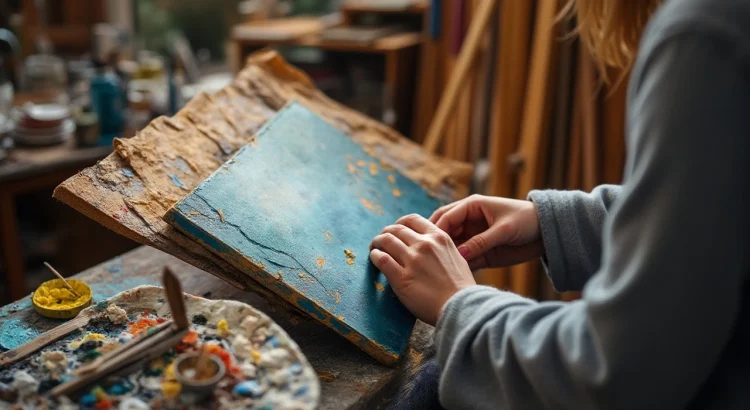Robert Draws – Footprints and Paint Smudges might once have been signs of carelessness or accidents in a painter’s studio, but now they represent a rebellious and meaningful movement in contemporary painting. Across global art scenes, artists are abandoning traditional canvases and embracing large, raw works that carry physical traces of their making. These paintings, often marked with footprints, pigment smears, and other remnants of studio life, challenge the boundaries between process and product. Rather than framing these canvases neatly, many are draped, suspended, or placed unconventionally in space. This allows them to respond to their architectural surroundings, creating a conversation between art and environment. The shift signals a craving for honesty and presence in a digital age, where brushstrokes and textures reclaim emotion. At the center of this evolution is a desire to show everything—the mess, the motion, and the memory behind the art.
A New Era of Expressionism Through Footprints and Paint Smudges
In the second wave of abstraction and conceptual painting, Footprints and Paint Smudges have become powerful tools of expression. They suggest more than aesthetic intention—they record movement, time, and even the weight of the artist’s body. Many contemporary creators treat their studios as stages, performing the act of painting with deliberate gestures that leave behind a visible history. This trace-oriented approach goes beyond mere composition, instead inviting viewers to engage with the physical residue of creative labor. These pieces are not only seen but felt through the marks that linger. Artists now favor unstretched canvas, allowing gravity to pull and shape the work in unpredictable ways. The resulting textures and forms mirror the unpredictability of human experience. At exhibitions worldwide, this raw aesthetic is gaining recognition not because it fits into a style, but because it speaks to an urgent need for sincerity in art.
“Read about: 5 Shocking Truths About Leng Jun, The Artist Who Defies Reality with a Brush!”
From Canvas to Space: The Architecture of Suspended Emotion
One of the most distinctive aspects of this trend is how these trace-laden works occupy space. Rather than being hung flat on gallery walls, these canvases are often draped over structures or suspended from ceilings, allowing their folds and weight to create sculptural effects. This installation approach gives each painting a three-dimensional life, blurring the line between painting and environment. Such arrangements invite viewers to walk around, under, or even through the works, turning the act of viewing into an immersive experience. At Kunsthalle Basel, Ser Serpas takes this concept further in the exhibition titled Of My Life. Her works, infused with AI-generated imagery and human touch, are pressed into fresh paint to mimic the impression of memory and duplication. The tension between algorithmic design and manual process creates a powerful meditation on transience. These suspended forms act not just as objects of beauty but as emotional anchors in space.
Impermanence and Poetry in Traced Surfaces
What makes these pieces resonate is not just their visual impact but their poetic layering of time and impermanence. When viewers encounter a painting streaked with footprints or smudged pigment, they are witnessing moments that cannot be replicated. This temporality makes the works feel alive. Ser Serpas, for instance, brings in imagery derived from artificial intelligence, only to alter and destabilize it through human gesture. The result is a canvas that holds multiple realities at once—the digital, the physical, and the personal. Through this juxtaposition, imperfection becomes the language of honesty. These paintings reject polish in favor of vulnerability. By allowing the unfinished, the raw, and the accidental to take center stage, the movement opens space for deeper emotional responses. These works are not static images, but breathing testaments to process, doubt, and transformation.
Why Traces Matter in the Future of Contemporary Painting
Looking ahead, the rise of paintings marked by footprints and paint smudges suggests a broader shift in how society values authenticity. As technology increasingly mediates daily life, the hunger for tangible and tactile experiences grows. This new wave of artists offers not only visual intrigue but also a reclaiming of presence in a world of pixels. In many of these works, you can find echoes of performance art, sculpture, and conceptual practices. Yet they remain deeply tied to the act of painting—a physical, immediate, and emotionally charged practice. The use of architectural interaction, AI-influenced imagery, and studio remnants positions these works at the intersection of tradition and innovation. As audiences seek art that speaks directly to human fragility and resilience, these raw and gestural creations will likely become central to the evolving definition of contemporary painting.



